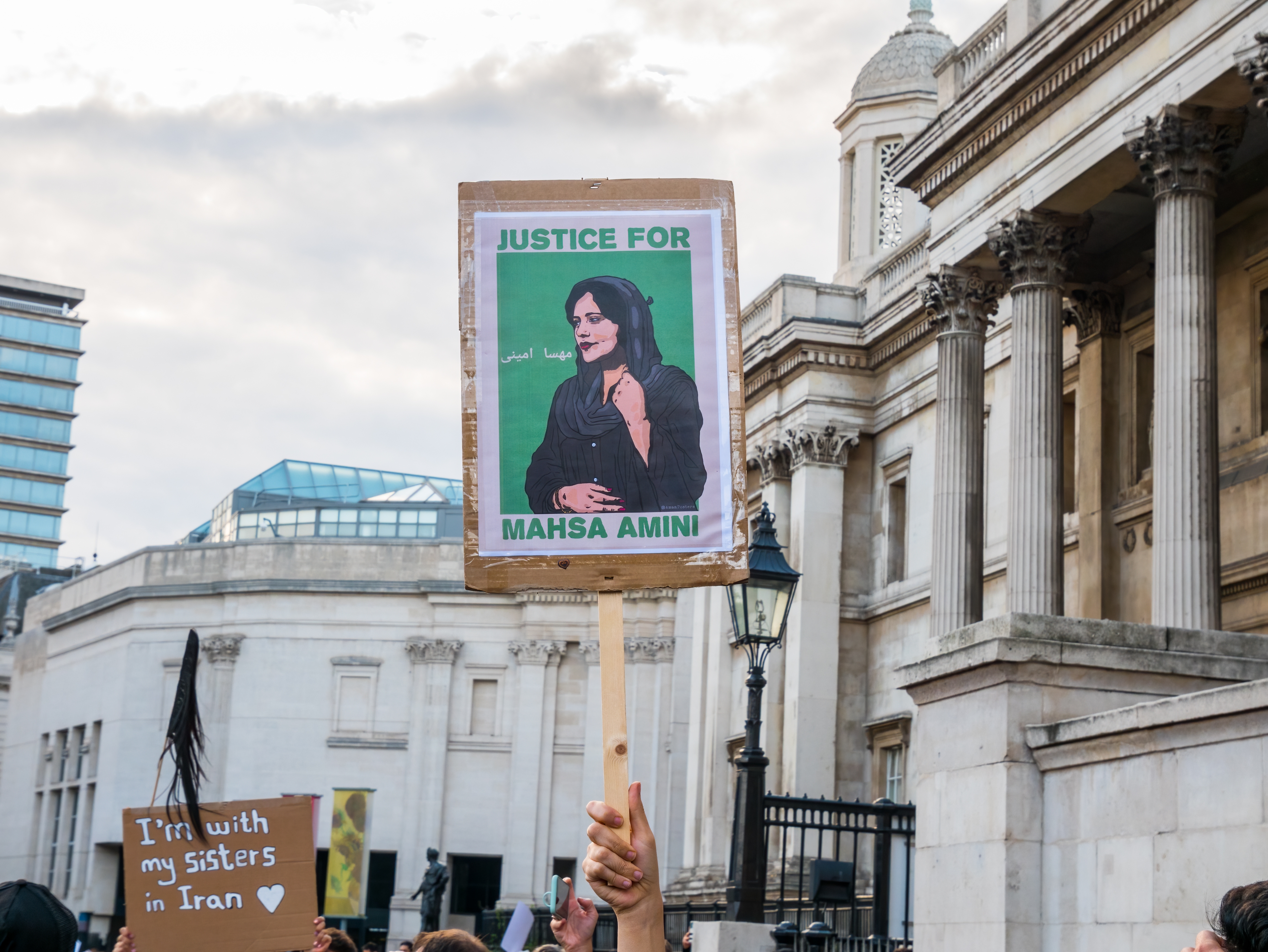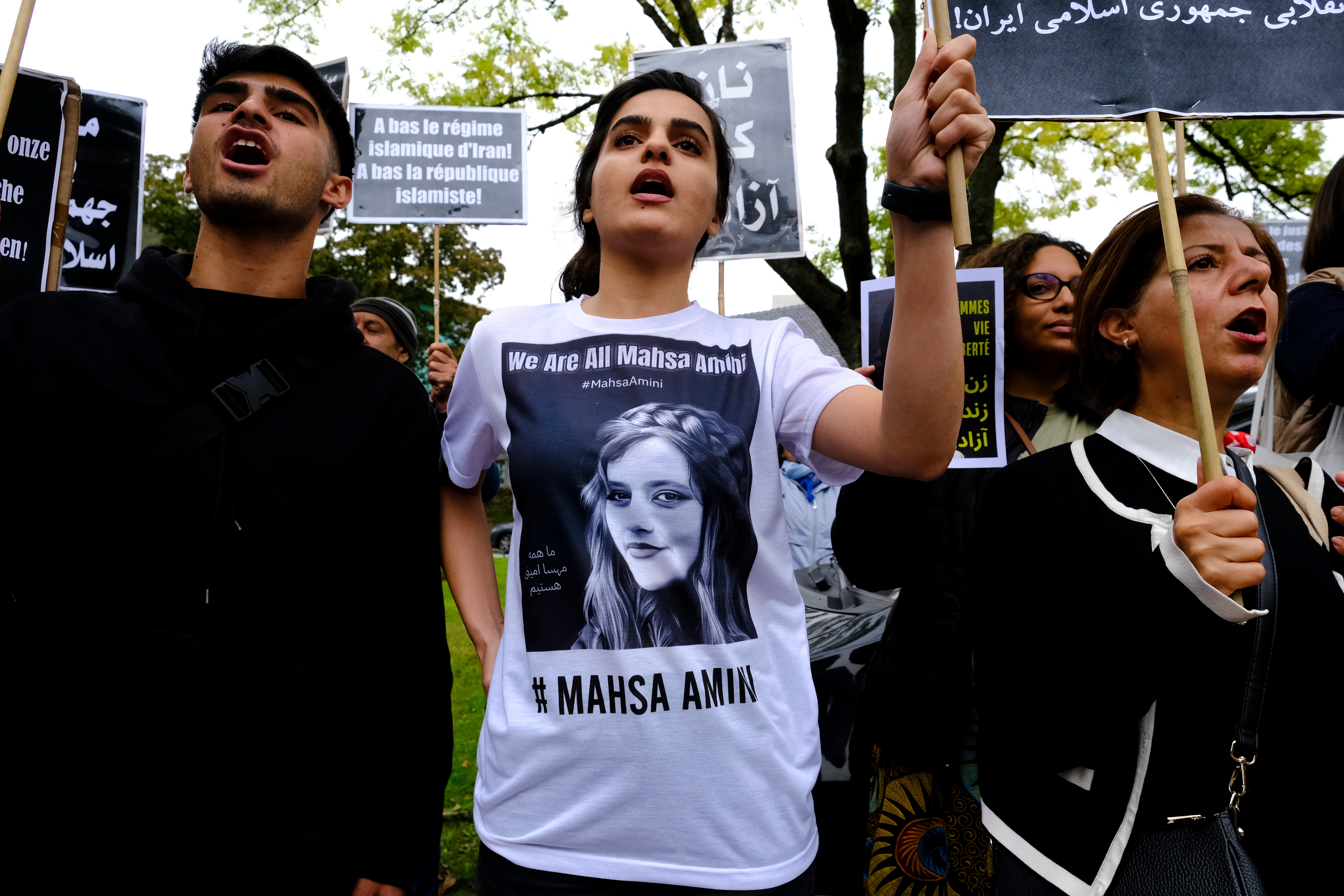Marianne Hafnor Bøe, Professor in Religious Studies, Department of Cultural Studies and Languages, UiS, explains what is happening in Iran now.
If you need someone to talk to, you can contact the SiS health services. Here you will find an overview of services offered on SiS's website.

What’s happening in Iran?
Large protests are taking place in several cities in the country. The background is that a young Kurdish-Iranian women, Mahsa Amini, died after being arrested by the morality police in Tehran on September 16th.
The protests are now in their third week. It is especially young people who take to the streets and demonstrate. They shout slogans such as “woman, life and freedom”, combined with “death to the dictator”.
The morality police?
The morality police ensures that Iranians comply with the hijab mandate, which is enshrined in Iran’s penal code. This means that they check how people are dressed, how much make-up they use, and whether they are wearing clothes that are too tight. The control particularly affects young people, both young women and men.
According to Iranian police, Amini died of a heart attack, but the protesters believe she was beaten to death in the custody of the morality police.
Are demonstrations common in Iran?
There have previously been demonstrations with demands for democratic changes in Iran. The largest demonstration took place in 2009, marking the start of what later became known as "The Green Movement". There were also protests in 2018-2019, which mainly involved demands for economic reforms after long periods of international sanctions that hit the population hard.
What’s new this time is that the starting point of the protests are demands for women’s freedom of choice and opposition to the hijab mandate. The demonstrations also seem to mobilize a wider layer of the population than before across gender, ideology, religious beliefs, class and ethnicity. Although there has been a predominance of women and young people, protesters are from different generations and include many men. Mahsa Amini was Kurdish, and therefore the protests have also included demands for Kurdish rights. Kurds form one of Iran’s ethnic minority groups, which has been particularly exposed to discrimination.

Why is this happening now?
The protests are a direct reaction to the morality police’s increased control of the country’s citizens. President Raisi introduced stricter regulations on what dress code that should be accepted in public in August this year. This resulted in more and stricter controls.
There are great contrasts in the Iranian population. Today’s system of government still has many supporters, but there are also more Iranians who want democratic changes.
Iran has a very young population. Over 60 percent of Iran’s inhabitants are under 30 years and born after the republic was established. There are also big differences between people living in big cities versus the more traditional villages, in addition to religious and secular dividing lines.
What is the situation for women in Iran?
It is no coincidence that the protests are based on the country's gender policy. Since the establishment of the Islamic Republic in 1979, the authorities have enforced strict gender segregation.
At the same time, Iranian women are highly educated, about 50 percent of Iran's university students are women. Nevertheless, Iran scores very low on the statistics of women who are working - only 14 percent of the women are working, which places Iran far down on the world statistics. Together, these factors form a backdrop that can explain why the protests have flared up now, but also why protests have been carried out at regular intervals in recent decades.

How will the situation develop?
In previous protests, the authorities have delt with the demonstrators in a very brutal way. In recent days, we have also seen that many people have been killed and that the police have attacked, among other things, university students in Tehran.
Iran’s supreme leader has also accused the US and Israel of being behind the demonstrations, in attempt to delegitimize the protesters.
At the same time, the protests have gained broad supports among the population. For the first time in the republic’s lifetime, protests against the hijab mandate and demands for women’s freedom of choice have been starting point for mobilization - against the authoritarian and patriarchal system of government in the country. Even if the authorities were to manage to quiet the demonstrations and calm the streets, I think the case will have ripple effects in the Iranian society for a long time to come.